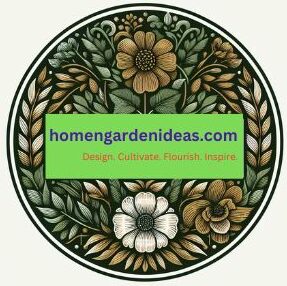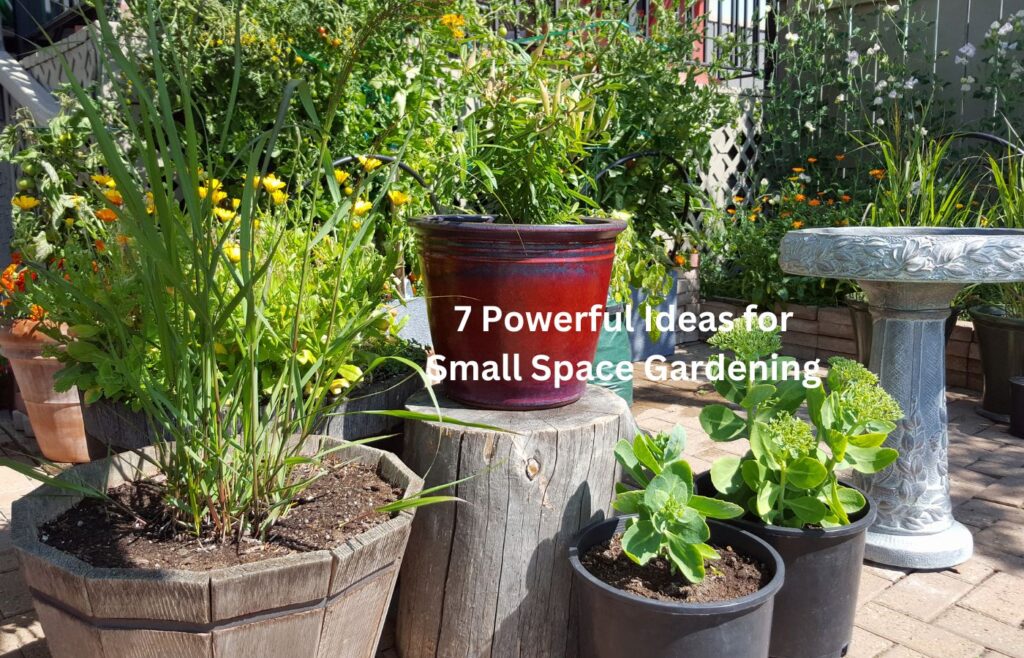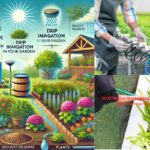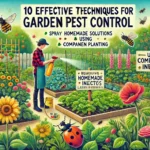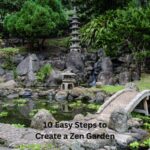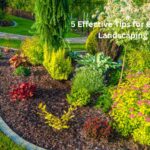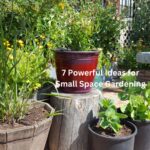Introduction – Ideas for Small Space Gardening
Greetings and welcome to HomeNGardenIdead.com! If you have a strong interest in gardening but are constrained by little area, you have found the appropriate source of information. Engaging in small space gardening may be highly gratifying and satisfying, as it has the power to convert even the most minuscule locations into vibrant and verdant havens. If you reside in a limited-sized flat, own a small outside area, or simply desire to optimize your gardening space, these 7 powerful ideas for small space gardening will assist you in commencing and attaining remarkable outcomes.
Vertical Gardening: Reach for the Sky
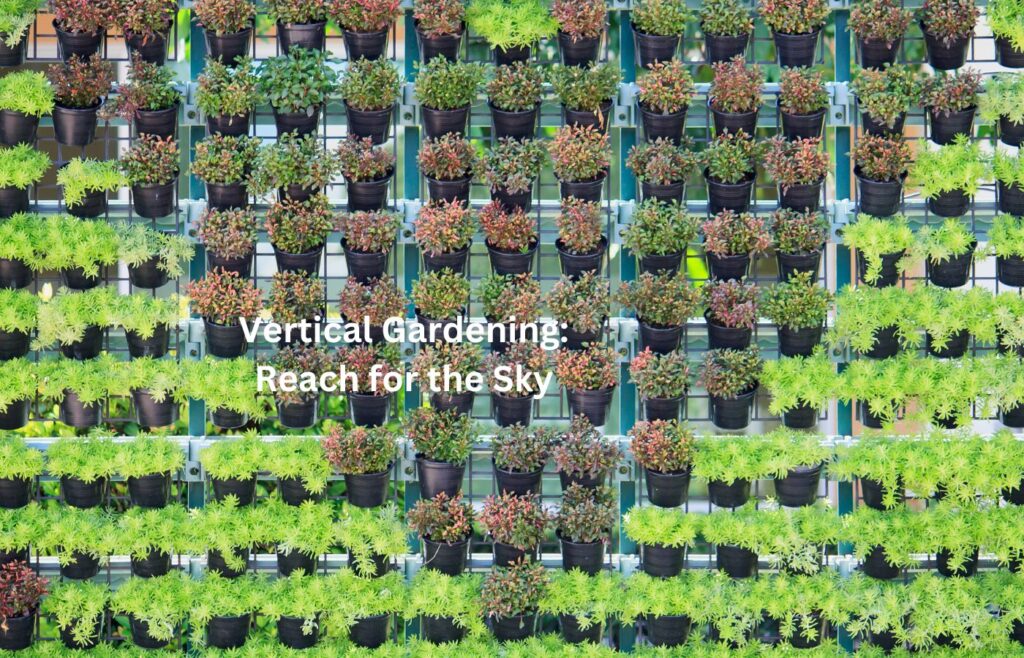
Vertical gardening arises as a brilliant solution and one of the most aesthetically pleasing ideas for small space gardening for individuals whose horizontal space is constrained. By adopting this clever methodology, plants are grown vertically as opposed to laterally, maximizing the utilization of all accessible areas. While enhancing air quality and insulation and beautifying otherwise unused areas, vertical gardens not only optimize space utilization but also impart visual allure to blank walls.
Trellises or lattices bolted to walls or railings constitute the initial stage in the construction of a vertical garden. Climbing plants such as cucumbers, tomatoes, and legumes flourish in such environments, and these structures furnish the essential support they require to endure. By transforming ordinary walls into vibrant, living tapestries, they function as green draperies.
The utilization of suspended baskets is an additional wonderful vertical gardening method. These eye-level containers are vibrant and aesthetically pleasing, enhancing the ambiance of any area by containing small vegetables, flowers, or herbs. Without sacrificing usable floor space, they are a simple and effective way to add vegetation to a confined space.
An additional innovative solution is verdant or living walls. Vertical arrangement-thriving plants, such as herbs, ferns, and succulents, can be cultivated in these utilizing modular systems or do-it-yourself labor. In addition to contributing to a healthier indoor environment by enhancing air quality, these living walls function as a focal point.
Finally, horizontal plant stands with tiers and shelving units can facilitate the placement of multiple containers. By creating a multi-tiered garden on these structures with minimal footprint on the ground, you can accommodate various plant species across multiple levels and find ideas for small space gardening.
Visual gardening is, in summary, an innovative and efficacious approach to horticulture in confined spaces. You can infuse vitality into any size home by cultivating vegetation vertically rather than laterally, thereby establishing a verdant sanctuary.
Container Gardening: Versatility in Pots
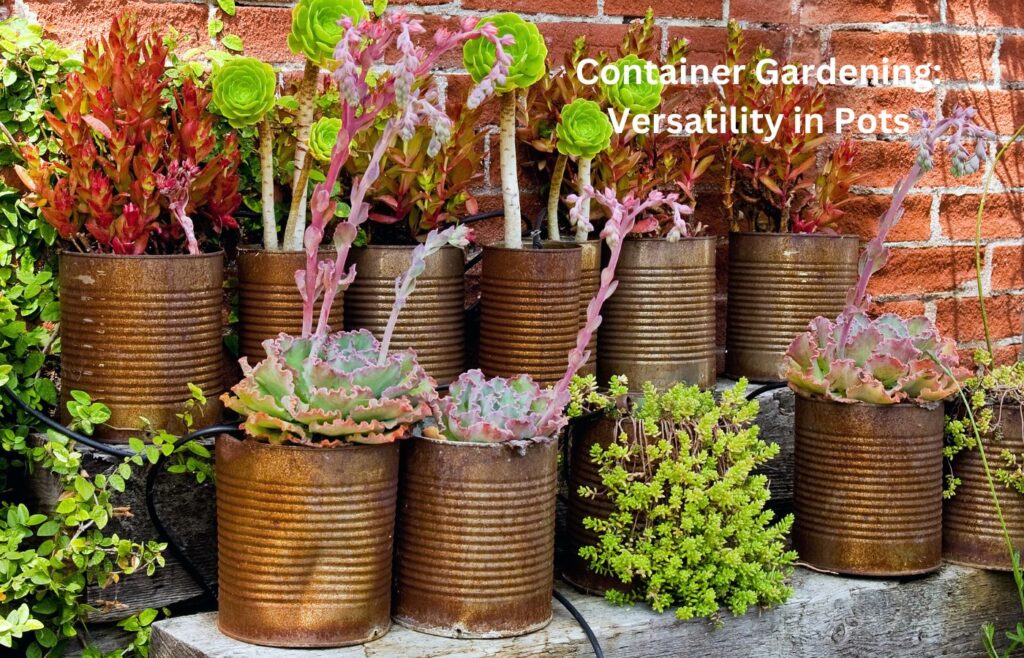
A monument to the flexibility and adaptability of small space gardening is container gardening. With so many container possibilities—from conventional pots to recycled materials—this approach offers the ideal solution for people with little space. It also enables the growing of a wide range of plants without the need for a big garden plot.
The first stage in container gardening success is selecting the appropriate container. Give materials like terracotta, ceramic, plastic, and even cloth pots with the right drainage holes some thought when choosing containers. Plants can suffer from or be killed by waterlogging, which is avoided by using the proper container to guarantee that the roots have adequate space to develop. Considering the kinds of plants you want to grow, you should also think about the containers’ depth and size.
Additionally important is using a premium potting mix that offers nutrients and excellent drainage. The base of the health and development of your plants is the potting mix. While being dense enough to hold moisture and nutrients, it should be loose enough for roots to penetrate.
When choosing plants, go for dwarf or compact types. For container gardening, herbs, salad greens, cherry tomatoes, and small fruit trees are all great options. These plants may flourish in cramped quarters and yield an amazing amount even there.
The mobility container gardening provides is a major benefit. Your plants can be simply moved about according to lighting and weather by setting containers on plant caddies or wheels. Rearranging your plants for aesthetic reasons is another way that this flexibility keeps your garden interesting and new.
More than just maximizing little areas are advantages of container gardening. It is easy to handle and maintain since it allows you to shift plants according to their sunlight requirements and the weather. It also enables imaginative layouts and patterns, thereby allowing you to showcase your style in your yard and ideas for small space gardening. Container gardening creates a world of opportunities and transforms even the smallest areas into vibrant green havens.
Raised Bed Gardening: Elevated Efficiency
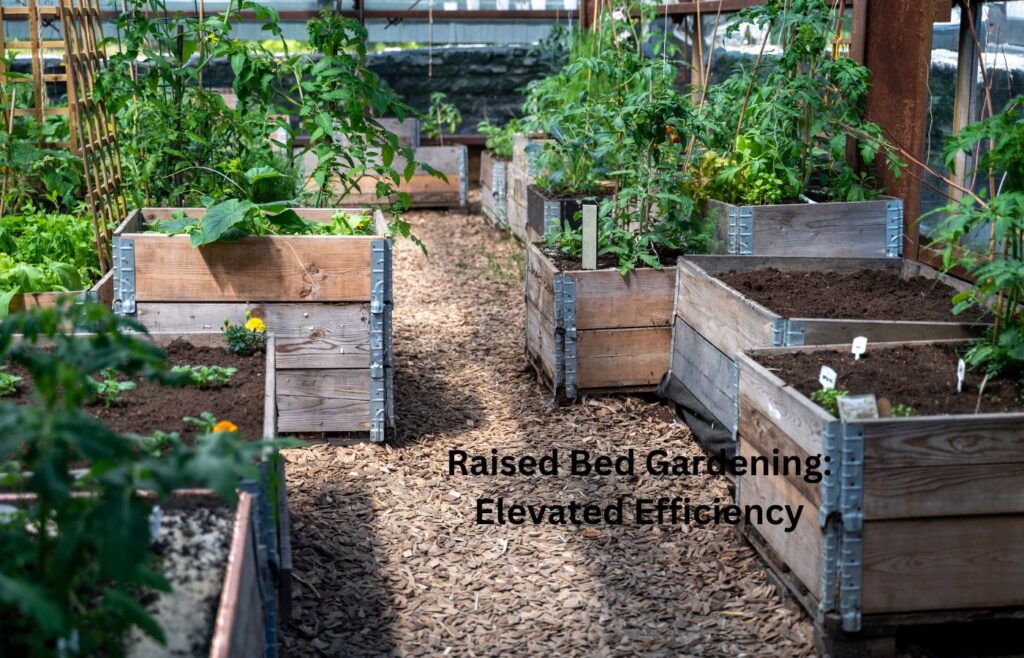
One very effective way to grow a range of plants in a limited area is raised bed gardening. Raising the soil level produces a regulated environment that maximizes accessibility, drainage, and soil quality—all of which are perfect for growing in tiny spaces.
First in this process is building raised beds. Built of wood, stone, or metal, these beds should be at least 6 to 12 inches high. In community or school gardens in particular, the raised structure not only offers a clear planting area but also shields plants from foot traffic and soil compaction.
Raised bed gardening depends critically on soil preparation. Rich, well-draining soil mix should be used to fill the beds; for additional nutrients, compost and organic waste are frequently added. Any garden needs high-quality, nutrient-rich soil, and raised beds offer you an immediate benefit over in-ground gardens since you can fill your raised bed with a combination of soil that is better than the native soil in your yard.
Maximizing space in your planting arrangement is essential. Raised beds enable kitchen gardeners to engage in a technique known as intensive planting, which involves packing a lot of plants into a little area and bringing variety into each garden bed by combining herbs, vegetables, and flowers. Maximize the space using companion planting methods, and take into account how close your water supply is for simple upkeep.
For your raised bed garden to thrive, regular care—watering, weeding, and insect monitoring—is crucial. An easy approach to intensely growing a limited area is with raised beds. Because there’s less need to stoop for weeding, watering, and other garden tasks, the raised design of these beds allows those with limited mobility to garden.
Growing in raised beds has many advantages. They lower the chance of erosion and compaction, give easier access for planting, weeding, and harvesting, and enhance the quality and drainage of soil. Because raised beds have less compacted soil, superior drainage, and warmer springtime temperatures that encourage plants to sprout earlier in the season, they are also more productive than beds in the ground. Raised bed gardening may revolutionize your tiny space gardening experience, regardless of your level of experience, and find one of the ideas for small space gardening.
Window Box Gardening: Green Windowsills
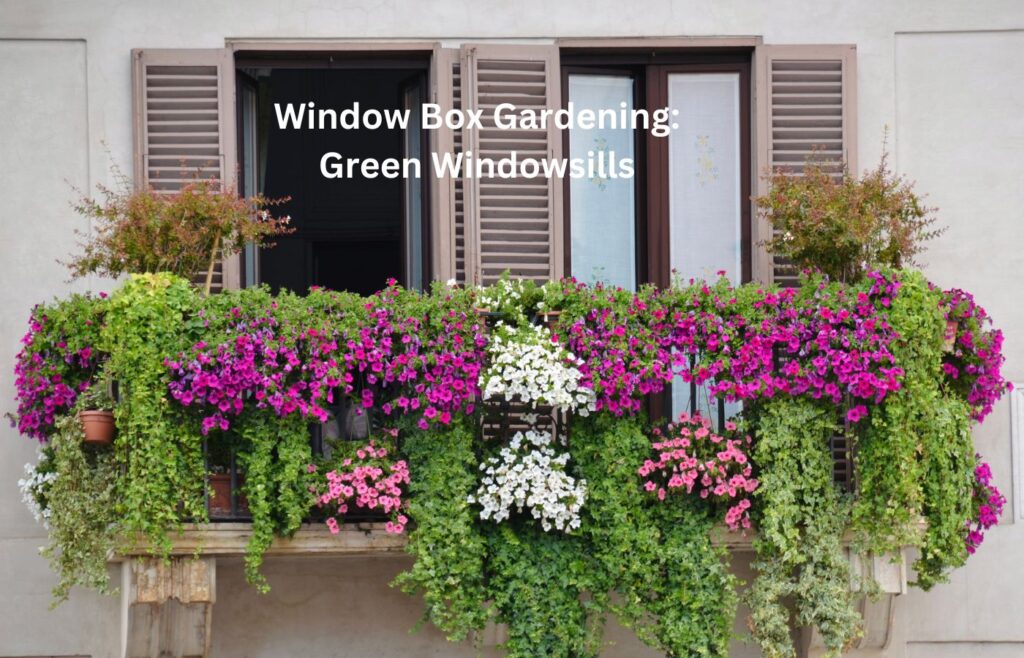
A charming and useful small-space gardening technique, window box gardening is especially helpful for city people with little outside area. Growing a range of plants right outside your window with these handy boxes can bring beauty and greenery into your living area.
The first stage in effective window box gardening is choosing the appropriate window boxes. Select sturdy window boxes that match your windowsill’s size. Perfect materials are metal, plastic, or wood. Your windows will seem attractive and durable at the same time thanks to these materials.
Taking mounting into account is a must. Put the window boxes firmly in place using hangers or brackets. They must be level and strong enough to bear the weight of the plants and soil. Your window garden’s stability and safety are guaranteed by correct installation.
Choose plants that will flourish in the sunlight coming through your window. Different plants work well for your window facing north, south, east, or west. For window box gardening, herbs, flowers, and tiny veggies like radishes and lettuce work well. Fresh veggies for your meals are just one of the many useful uses for these plants, which also enhance the beauty of your window.
Your window box garden will thrive only with proper care. Water and fertilize the plants regularly according on their particular requirements. The growing season will see your window box lively and full of life because deadheading flowers will promote ongoing blooming.
Planting in window boxes has several advantages. It maximizes the inside view and improves curb appeal on the outside of your house by using otherwise wasted space. Fresh herbs and veggies are also easily accessible from your kitchen window.
In summary, window box gardening is a lovely, useful, and effective approach to planting in small areas. Window bo gardening is one of the ideas for small space gardening. Your windowsills become lush, green areas thanks to it, which brings a little bit of nature into your city home. Right on your windowsill, you may grow a healthy garden with the correct plants, window boxes, and upkeep.
Indoor Gardening: Bringing Nature Inside
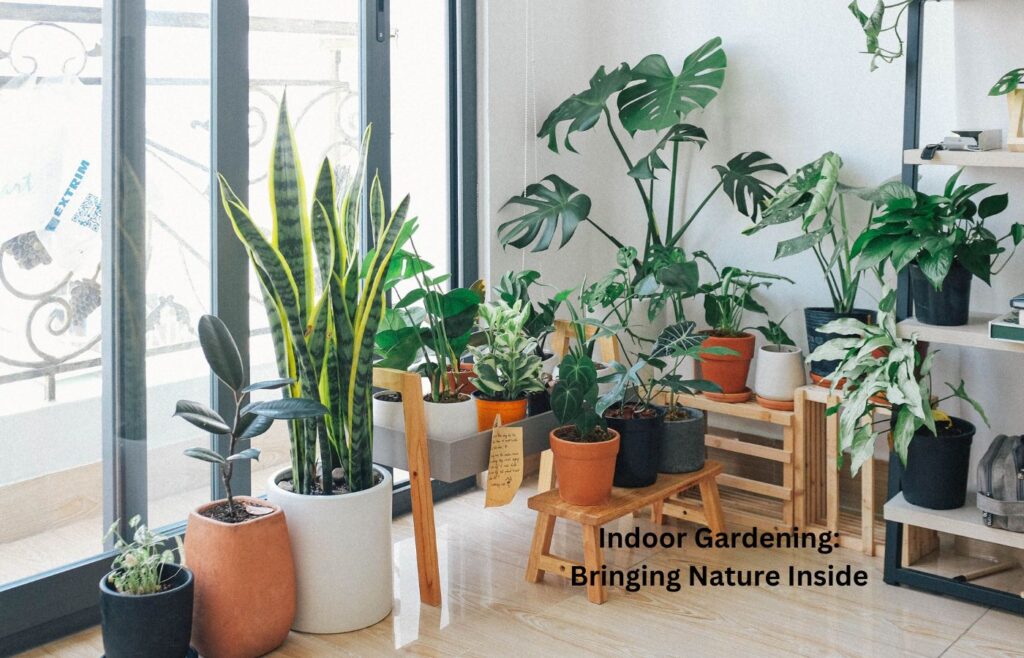
If you don’t have much outside space, one excellent approach to incorporating nature into your house is to cultivate indoors. An indoor garden that thrives with the correct plant choices and maintenance will improve your mood and the atmosphere of your house in addition to cleaning the air.
Getting your plants enough light is the first step toward effective indoor gardening. Grow lights can be added to natural light from windows if it is not enough. Because indoor sunlight is less intense than outside, you could need to utilize grow lights or move your plants to produce the best possible environment.
Selection of the appropriate containers is also very important. To avoid waterlogging, which can seriously damage or even kill your plants, choose containers with drainage holes. Aesthetically pleasing indoor gardening options include terrariums, hanging planters, and decorative pots.
Choose indoor plants like pothos, spider plants, peace lilies, and herbs like basil and mint. Known to thrive inside, these plants need less frequent maintenance than some other types.
Your inside garden cannot succeed without proper care. This covers preserving appropriate humidity, temperature, and irrigation levels. For your plants to remain healthy, dust the leaves often and look for insects. Please take care not to overwater; it is simpler to resuscitate a plant from underwatering than from overwatering.
The benefits of indoor gardening are many. It improves the atmosphere and quality of the interior air, giving your house a livelier and more colorful vibe. For houses without an outdoor area, it offer a green haven inside the living room. It also offers chances for gardening year-round, so you may make use of gardening’s advantages whatever the season.
To sum up, people who wish to add a little bit of nature into their homes or who have limited room can find great success with indoor gardening using one of the ideas for small space gardening. A healthy indoor garden can be grown that not only enhances the appearance of your area but also improves your health with the correct maintenance. Don’t allow a few setbacks to derail your enjoyment of your new gardening journey. What suits your indoor garden the best will become apparent to you over time.
Square Foot Gardening: Maximizing Every Inch
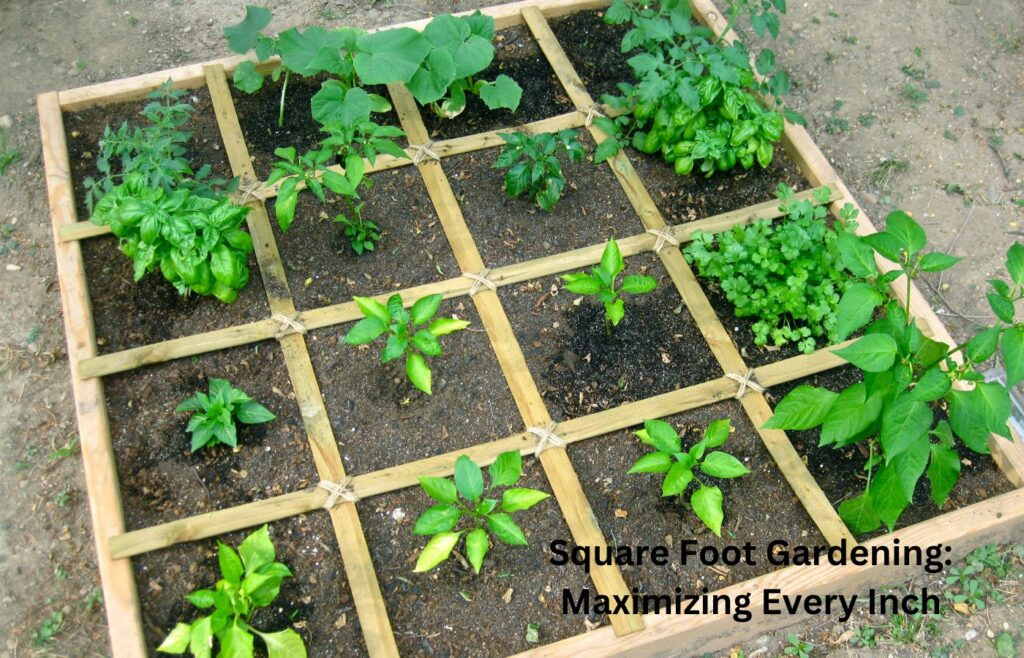
Concentrating on making the most of little garden areas, square-foot gardening is a very effective approach. Those with little room and a need for high yield would find this method ideal since it divides the growing area into smaller, more controllable pieces.
Building a square-foot garden bed is the first step in beginning square-foot gardening. This is building an elevated bed and, using string or wood dividers, dividing it into a grid of one-foot squares. Square raised garden beds are most often 4×4 feet in size, which readily splits into sixteen 1×1-foot squares.
Square foot gardening depends critically on soil preparation. Top the bed with a premium soil mix, and for extra nutrients, think about adding compost. With this technique, you save area and work less to get from planting to harvest.
According to their space needs, grow various crops in each square. To increase output, plant intensively. Making the most of your little garden, this methodical and effective planting encourages larger yields when harvesting time comes.
Crop rotation and succession planting can help to maintain the garden productive all through the growing season. From one 4×4 bed, you may grow enough salad crops for two adults for an entire season by managing the garden with successive plantings.
Gardening on a square foot has many advantages. High production with effective utilization of space is made possible by it. It is simple to maintain and manage, and the dense planting pattern might encourage the development of organic mulch, which will make weed growth extremely difficult. Being loose and controllable, it also lessens soil compaction.
Finally, square-foot gardening is a very suggested technique for people who wish to raise a lot of food in a little space. It’s a method for concentrating square feet on growing a tiny, well-organized, and very productive garden. Square foot gardening may maximize your little space whether you’re an experienced gardener or a novice and it is one of the ideas for small space gardening.
Hydroponic Gardening: Soil-Free Solutions

Hydroponic gardening is an innovative method of cultivating vegetation that does not require the use of soil. Conversely, vegetation is cultivated in water solutions that are abundant in nutrients, rendering this method an optimal resolution for horticulture in a limited area, particularly indoors.
Before beginning hydroponic cultivation, one must choose a hydroponic system. Aeroponics, deep water culture (DWC), nutrient film technique (NFT), and other methods are among the many available. The system selected is determined by the available space and requirements.
Assembling a hydroponic system entails the procurement and installation of grow lamps, water pumps, and nutrient solutions. Additionally, appropriate ventilation and temperature regulation are critical. Since hydroponic gardens are frequently established indoors, greater environmental control is generally necessary.
Choose plants that can flourish in hydroponic environments, including strawberries, lettuce, spinach, and herbs. These plants are capable of thriving in water and can supply your household with an abundance of fresh produce.
In hydroponic horticulture, routine monitoring of nutrient concentrations, pH, and water quality constitutes maintenance. Additionally, the system must be cleaned to prevent the accumulation of microorganisms and disease. The absence of soil facilitates the transportation of nutrients from the water to the roots of the plant, potentially leading to increased growth rates and yields.
There are numerous advantages to hydroponic horticulture. It permits space utilization that is more efficient, resulting in increased growth rates and productivity. Lack of soil reduces the susceptibility to soil-borne diseases and parasites. It is also appropriate for controlled indoor environments, making it an excellent choice for those with limited space or who wish to garden throughout the year.
In conclusion, hydroponic gardening provides a novel and effective method and one of the ideas for small space gardening without the use of soil. You can maximize your yield and make the most of your space by cultivating a variety of plants in a controlled environment with the proper equipment and maintenance.
Conclusion – Ideas for Small Space Gardening
Regardless of the dimensions of one’s living area, ideas for small space gardening present an exceptional opportunity to interact with nature, cultivate one’s sustenance, and enhance one’s environment. You can transform a confined space into a flourishing garden oasis by adopting these seven ideas for small space gardening strategies. One can investigate a myriad of opportunities to express their ingenuity and aptitude for gardening, including vertical cultivation, container gardening, constructing raised beds, and hydroponics.
Maintain in mind that careful planning, plant selection, and garden maintenance are all crucial components for achieving success in limited-space gardening. May your modest horticulture area be adorned with verdant foliage and abundant produce. Best wishes!
HomeNGardenIdead.com appreciates your visit. More horticulture inspiration and advice will be forthcoming.
The article “7 Powerful Ideas for Small Space Gardening” is written by Farhanul Haque, HomeGardenIdeas.com. Our team of passionate writers and experts shares tips and inspiration on gardening, home improvement, and design to help you create your dream space.
